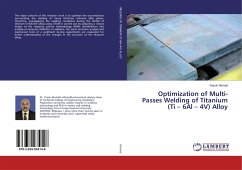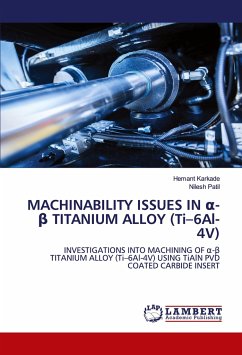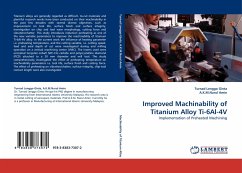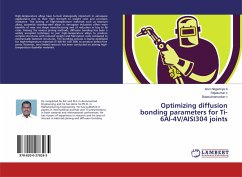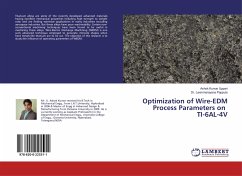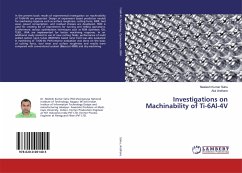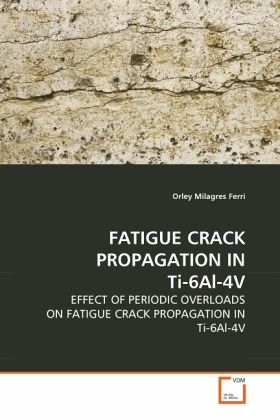
FATIGUE CRACK PROPAGATION IN Ti-6Al-4V
EFFECT OF PERIODIC OVERLOADS ON FATIGUE CRACK PROPAGATION IN Ti-6Al-4V
Versandkostenfrei!
Versandfertig in 6-10 Tagen
32,99 €
inkl. MwSt.

PAYBACK Punkte
16 °P sammeln!
The influences of the microstructure on the crack propagation behavior in the ( + ) Ti-6Al-4V alloy was studied by comparing a fine bi-modal and a coarse lamellar microstructure. Fatigue crack propagation tests were performed using CT-specimens with a computer controlled servo hydraulic testing machine, operating under load control at 30Hz (sine wave) and an R-ratio of 0.1. The experiments were performed at room temperature in air. Tests at constant amplitude and periodically superimposed single tensile overloads (overload ratio 1.5) were carried out. Intermittent baseline cycles of n=5,000 be...
The influences of the microstructure on the crack propagation behavior in the ( + ) Ti-6Al-4V alloy was studied by comparing a fine bi-modal and a coarse lamellar microstructure. Fatigue crack propagation tests were performed using CT-specimens with a computer controlled servo hydraulic testing machine, operating under load control at 30Hz (sine wave) and an R-ratio of 0.1. The experiments were performed at room temperature in air. Tests at constant amplitude and periodically superimposed single tensile overloads (overload ratio 1.5) were carried out. Intermittent baseline cycles of n=5,000 between consecutive overloads was applied. For both microstructures, the crack propagation rate was reduced in the presence of overloads. This retardation is more pronounced for the bi-modal microstructure compared to the lamellar condition. Detailed investigations of the fracture surfaces demonstrated the presence of steps parallel to the fatigue crack propagation direction emanating from theoverload markers. The pronounced retardation effect observed for the bi-modal microstructure is related to the higher amount of steps along the overloads markers.




